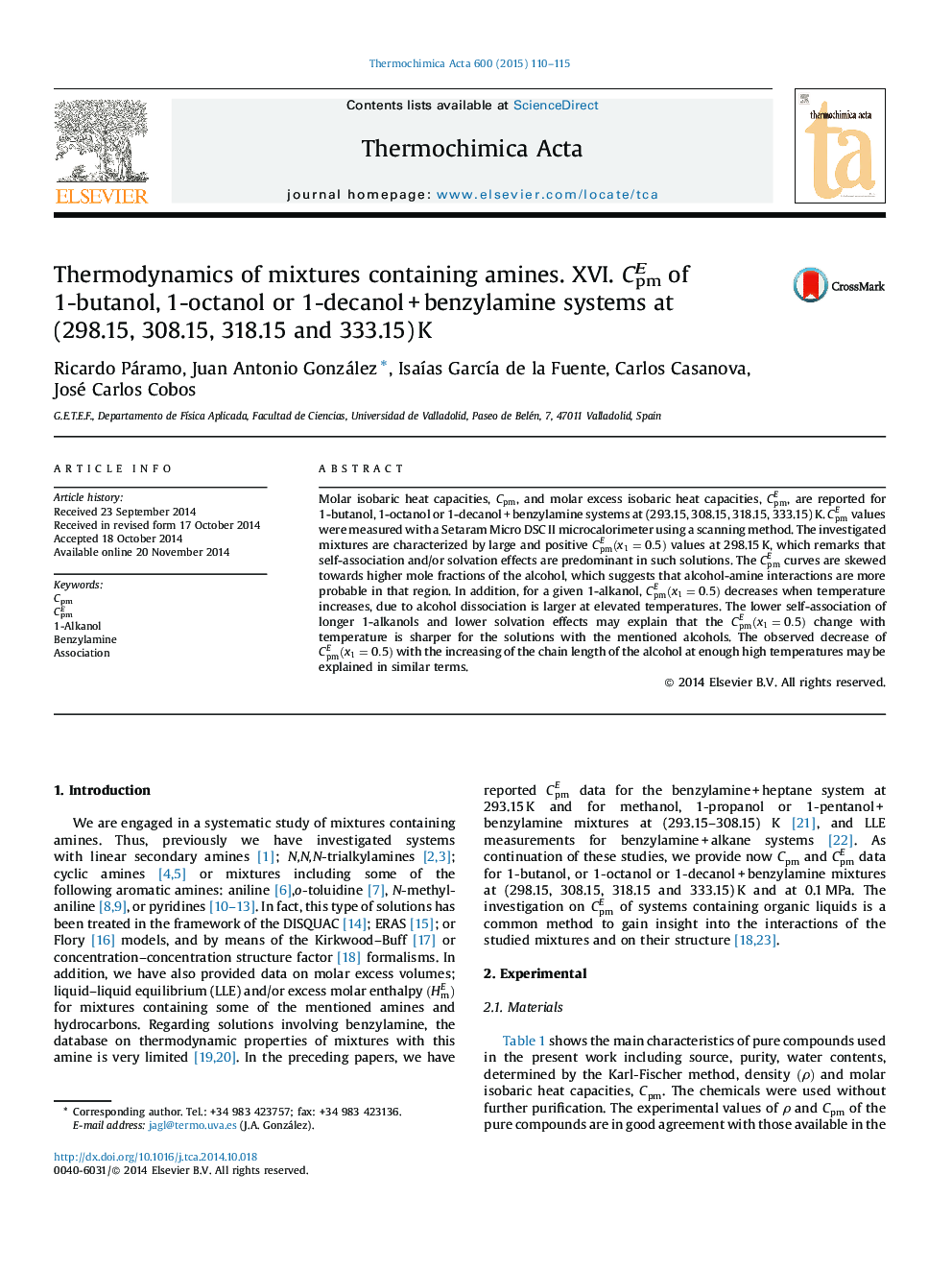| Article ID | Journal | Published Year | Pages | File Type |
|---|---|---|---|---|
| 673037 | Thermochimica Acta | 2015 | 6 Pages |
•CpmEof CH3(CH2)nOH (n = 3,7,9) + benzylamine systems are reported at (298.15–333.15) K.•At 298.15 K, CpmE(x1=0.5) values are large and positive.•Alcohol self-association and solvation between unlike molecules are dominant effects.•CpmE(x1=0.5)decreases when T increases due to large alcohol dissociation at higher temperatures.•CpmE(x1=0.5)decreases with the increasing of the alcohol size.
Molar isobaric heat capacities, CpmCpm, and molar excess isobaric heat capacities, CpmE, are reported for 1-butanol, 1-octanol or 1-decanol + benzylamine systems at (293.15, 308.15, 318.15, 333.15) K. CpmE values were measured with a Setaram Micro DSC II microcalorimeter using a scanning method. The investigated mixtures are characterized by large and positive CpmE(x1=0.5) values at 298.15 K, which remarks that self-association and/or solvation effects are predominant in such solutions. The CpmE curves are skewed towards higher mole fractions of the alcohol, which suggests that alcohol-amine interactions are more probable in that region. In addition, for a given 1-alkanol, CpmE(x1=0.5) decreases when temperature increases, due to alcohol dissociation is larger at elevated temperatures. The lower self-association of longer 1-alkanols and lower solvation effects may explain that the CpmE(x1=0.5) change with temperature is sharper for the solutions with the mentioned alcohols. The observed decrease of CpmE(x1=0.5) with the increasing of the chain length of the alcohol at enough high temperatures may be explained in similar terms.
Graphical abstractFigure optionsDownload full-size imageDownload as PowerPoint slideCp,mE for 1-butanol(1) (●) or 1-decanol(1) (■) + benzylamine(2) mixtures at 318.15 K and at 0.1 MPa
